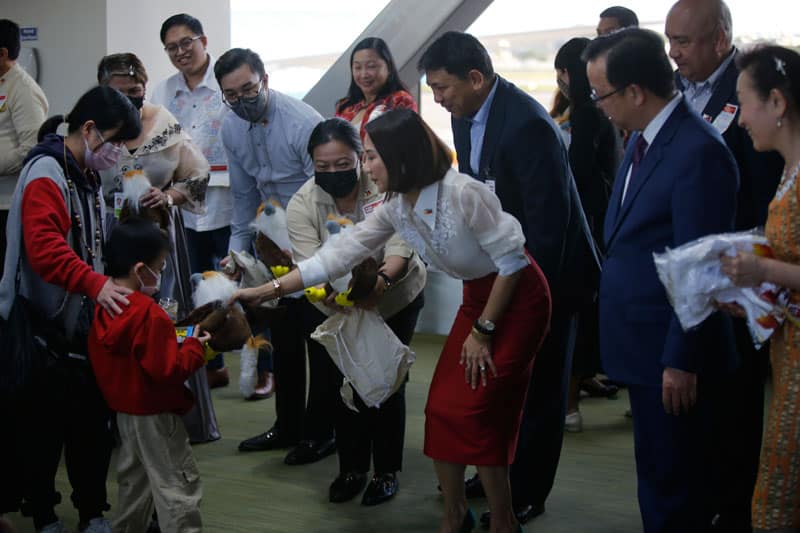A record 189 Chinese tourists arrived in Manila on Tuesday, airport authorities reported.
Manila airport officials led by general manager Cesar Chiong and Tourism executives headed by Secretary Christina Garcia-Frasco, along with Chinese ambassador to the Philippines Huang Xilian, welcomed the arrivals who landed at the Ninoy Aquino International Airport -Terminal 1 at 4:43 p.m. aboard Xiamen Air flight MF 819.
An Immigration officer told reporters that it was the first time that he saw such a huge number of Chinese tourists arrived in a single batch in Manila.

“Ngayon lang ako nakakita ng ganito kalaking bilang ng Chinese tourists since the pandemic,” he said.
Majority of the tourists were from Xiamen who came with a handful of other foreign nationals and at least 10 children who were provided with kiddie stuff toys and shirts by the Philippine Tourism department.
The tourists underwent regular airport procedure at the quarantine and immigration sections.
“They were subjected to the arrival guidelines of Immigration for foreign nationals. What’s the protocol for other nationalities, the same will be applied to them,” a NAIA information officer said.
The Department of Tourism (DOT) acknowledged the significant contribution of the People’s Republic of China as a major tourism market of the Philippines, next to South Korea.
The DOT said in 2019 alone, 1,743, 309 million Chinese tourists visited Manila.
“We look forward to the significant contribution of the Chinese market to the recovery and resurgence of the Philippine travel and tourism industry,” Frasco said in an interview with Xinhua News.
“We gladly welcome back our Chinese friends to the Philippines’ award-winning and emerging tourist destinations,” she added.
Frasco said the Philippines “is grateful for the commitment to the continued pursuit of fruitful and productive Filipino-Chinese interactions.”
“We embrace with enthusiasm the continued convergence and collaborations of our tourism stakeholders, travelers, tourism players, national agencies, local government units, and host
communities, in making the Year of the Rabbit a truly prosperous year for Philippine tourism,” she added.





